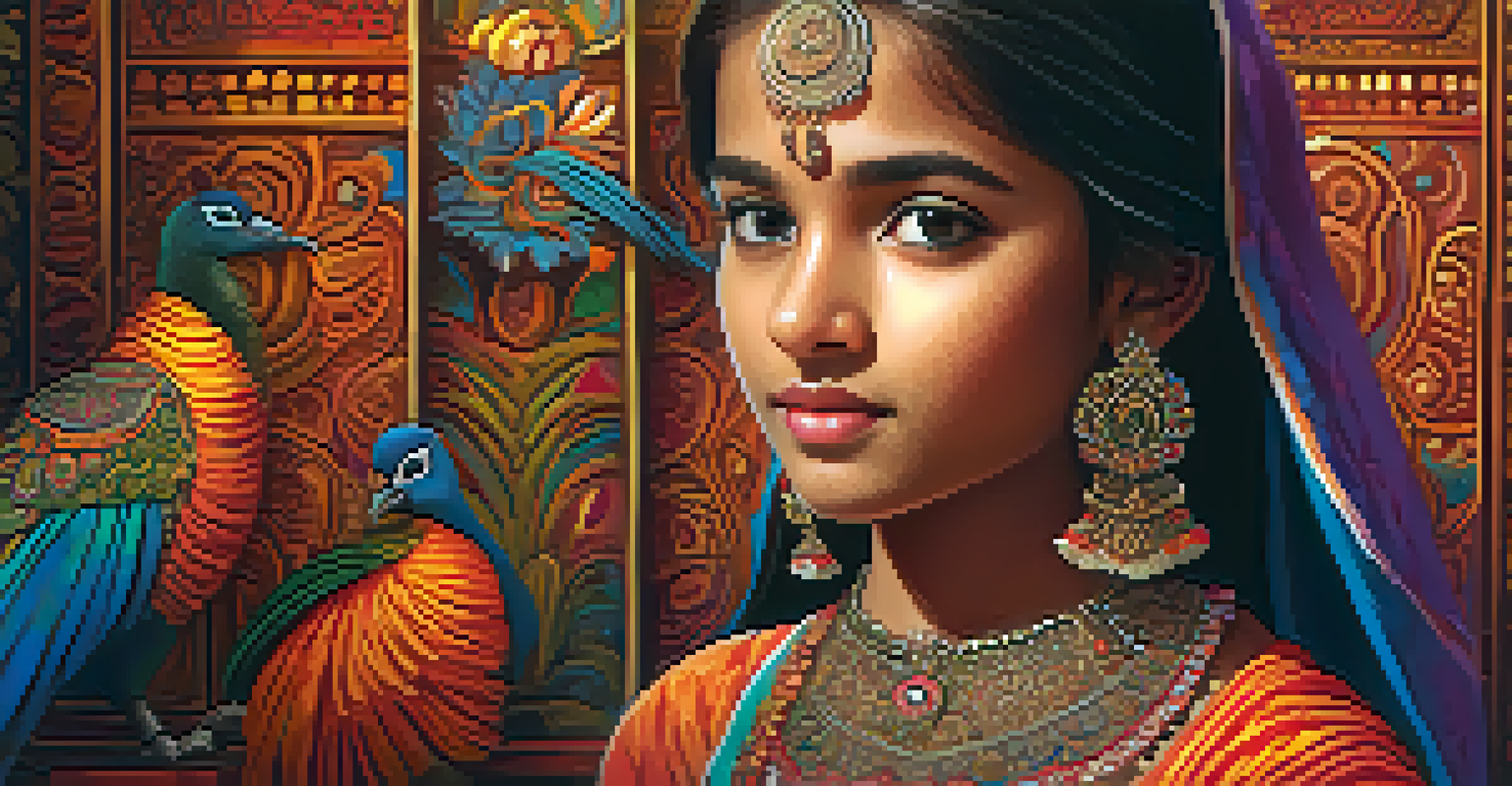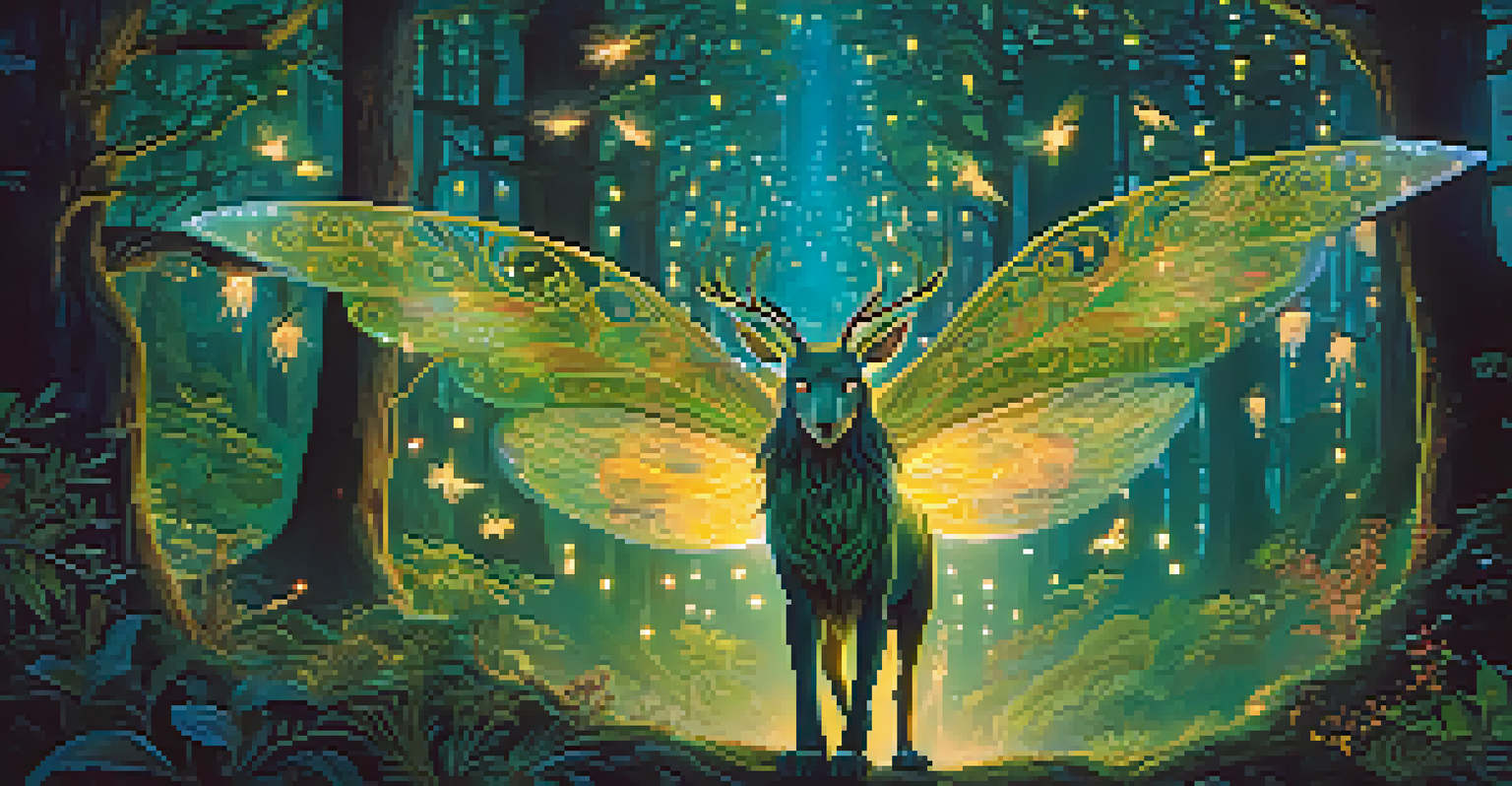Cultural Influences in Animated Films Around the Globe

The Role of Culture in Storytelling through Animation
Animation is a powerful medium for storytelling, with culture playing a critical role in shaping narratives. Each culture brings its unique perspectives, traditions, and values to the table, influencing the characters and plots that emerge. For instance, Japanese anime often explores themes of honor and family, reflecting deep-rooted cultural beliefs.
Animation is not the art of drawings that move, but the art of movements that are drawn.
In contrast, Western animations like Disney films tend to emphasize individualism and personal growth, showcasing a more optimistic worldview. This difference stems from the varying cultural backgrounds and societal norms that inform the stories being told. As audiences, we gain insights not just into the characters' journeys but also into the cultures they represent.
Ultimately, the culture embedded in animated films enriches our viewing experience, allowing us to engage with diverse worldviews. This blend of storytelling and cultural influence creates a tapestry of narratives that resonate with audiences globally.
Animation Styles Reflecting Cultural Heritage
The visual style of animated films often mirrors the cultural heritage of their origin. For example, traditional Chinese animations frequently incorporate elements of brush painting, giving them a distinct aesthetic that honors their artistic history. This visual representation helps viewers connect with the culture on a deeper level.

Similarly, Indian animation showcases vibrant colors and intricate designs, often inspired by local art forms like Madhubani and Warli. These styles not only serve to beautify the films but also tell stories that resonate with cultural significance. The choice of animation style can thus act as a cultural ambassador, introducing audiences to new artistic traditions.
Culture Shapes Animation Narratives
Different cultures influence storytelling in animation, providing unique perspectives and values that enrich the viewing experience.
By exploring different animation styles, filmmakers celebrate their cultural roots while inviting others to appreciate them. This exchange of artistic expression fosters a greater understanding of global cultures, enriching the animation landscape as a whole.
Cultural Folklore and Myths in Animation
Folklore and myths are powerful elements in many animated films, drawing upon age-old stories that resonate across generations. These narratives often carry moral lessons or explain natural phenomena, making them a rich source of inspiration for animators. For instance, films like 'Moana' and 'Coco' are deeply rooted in their respective cultures' myths and legends.
Stories can conquer all difficulties.
By adapting these tales, filmmakers breathe new life into traditional stories, making them accessible to modern audiences. This not only preserves cultural heritage but also allows for creative reinterpretation, fostering a dialogue between the past and present. As viewers, we not only enjoy captivating stories but also gain insights into the cultural significance behind them.
In this way, animated films become vessels for cultural preservation, ensuring that folklore and myths continue to be shared and celebrated. They remind us of our universal human experiences, connecting us through shared narratives while highlighting our unique cultural identities.
The Impact of Globalization on Animated Films
Globalization has significantly impacted animated films, allowing for broader cultural exchanges and collaborations. As studios from different countries work together, we see a blending of storytelling techniques and artistic styles that enrich the animation landscape. For example, the collaboration between American and Japanese studios has led to unique creations that appeal to diverse audiences.
However, this blending can also lead to cultural dilution, where distinct cultural elements become homogenized in the pursuit of global appeal. This raises important questions about authenticity and representation in animated storytelling. Audiences increasingly seek films that honor and accurately portray the cultures they originate from.
Visual Styles Reflect Cultural Heritage
The animation styles used in films often mirror the artistic traditions of their cultures, enhancing audience connection to those backgrounds.
Navigating this delicate balance is crucial for filmmakers today. By embracing their cultural uniqueness while being open to global influences, animated films can continue to thrive in an interconnected world, celebrating diversity while fostering unity.
Representation and Diversity in Animated Characters
The representation of diverse cultures in animated films is essential for fostering inclusivity and understanding. Characters from various backgrounds allow audiences to see themselves reflected on screen, which can be empowering and affirming. Films like 'Raya and the Last Dragon' and 'Soul' have made significant strides in showcasing characters from underrepresented communities.
However, it's crucial for these portrayals to be authentic and respectful. Misrepresentation can perpetuate stereotypes and lead to cultural appropriation, which can harm the very communities they aim to represent. Filmmakers must prioritize collaboration with cultural consultants to ensure accurate and respectful portrayals of characters and their stories.
By focusing on genuine representation, animated films can become powerful tools for empathy and understanding, educating audiences about diverse cultures while celebrating their richness. This shift towards inclusivity not only enhances storytelling but also creates a more equitable animation industry.
The Evolution of Animation Techniques and Cultural Expression
As animation techniques evolve, so too does the ability to express cultural nuances and stories. Traditional hand-drawn animation is being complemented by 3D animation and computer-generated imagery (CGI), offering new possibilities for storytelling. This evolution allows filmmakers to create more immersive experiences that can capture the essence of different cultures more effectively.
For example, films like 'Spider-Man: Into the Spider-Verse' not only showcase cutting-edge animation technology but also weave in cultural references that resonate with specific audiences. The innovative use of techniques can heighten the emotional impact of cultural narratives, making them more relatable and engaging.
Diversity in Characters Matters
Authentic representation of diverse cultures in animated films fosters inclusivity and understanding while avoiding harmful stereotypes.
As we look to the future, the integration of emerging technologies such as virtual reality (VR) and augmented reality (AR) holds even more potential for cultural expression in animation. These advancements could open doors to entirely new storytelling formats that deepen our understanding of diverse cultures while entertaining audiences worldwide.
The Future of Cultural Influences in Animation
The future of animated films promises to be even more intertwined with cultural influences as global connectivity continues to expand. As audiences become more diverse, filmmakers are increasingly challenged to create stories that resonate across cultural boundaries. This will require a commitment to authenticity and respectful representation in storytelling.
Moreover, with the rise of streaming platforms, there is greater access to international animated films. This exposure allows audiences to explore narratives from different cultures, fostering appreciation and understanding. As viewers engage with these films, they contribute to a more inclusive global dialogue.

Looking ahead, the potential for cultural influences in animation is limitless. By embracing diverse stories and voices, the animation industry can create a rich tapestry of narratives that celebrate our shared humanity while honoring the unique qualities of each culture.